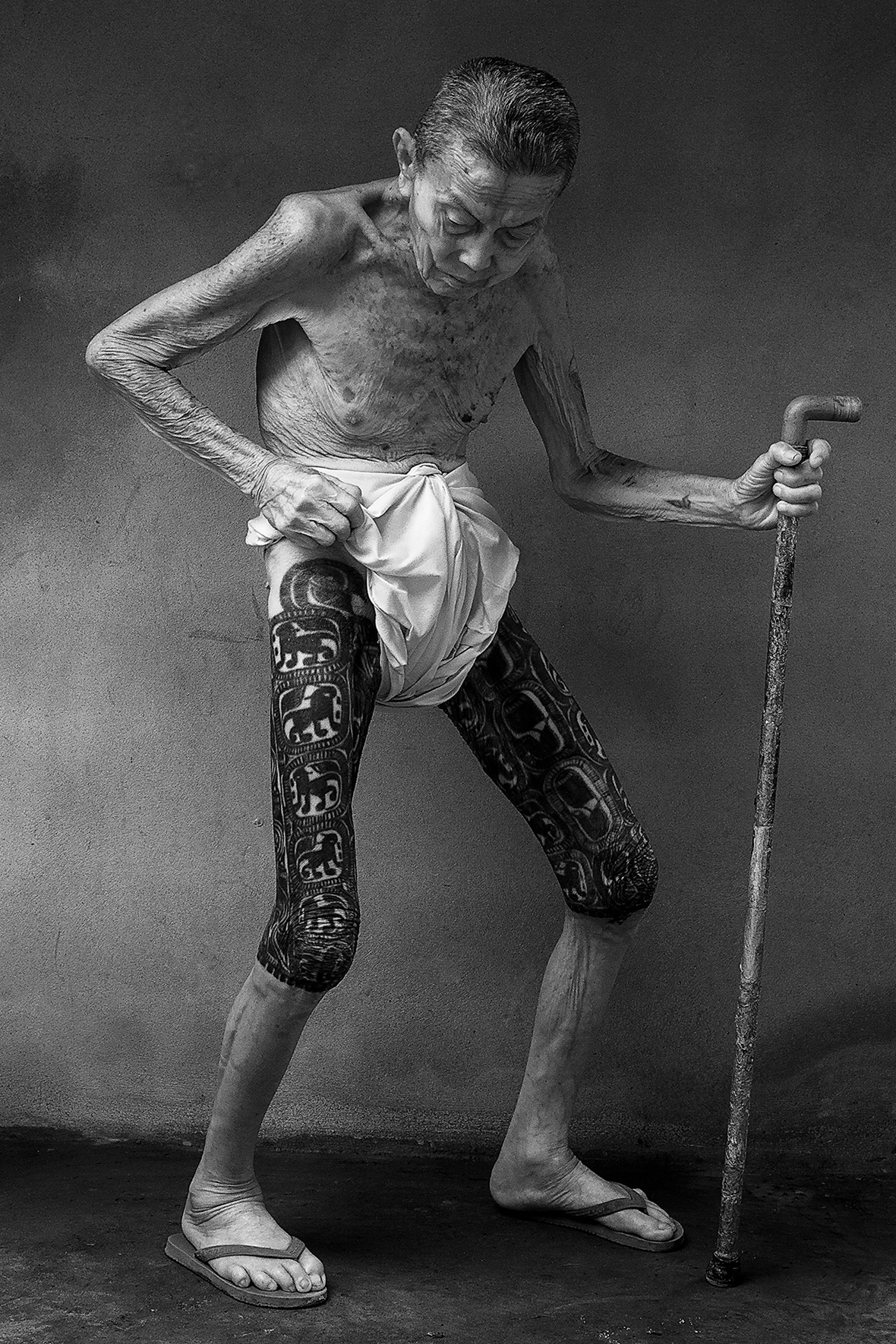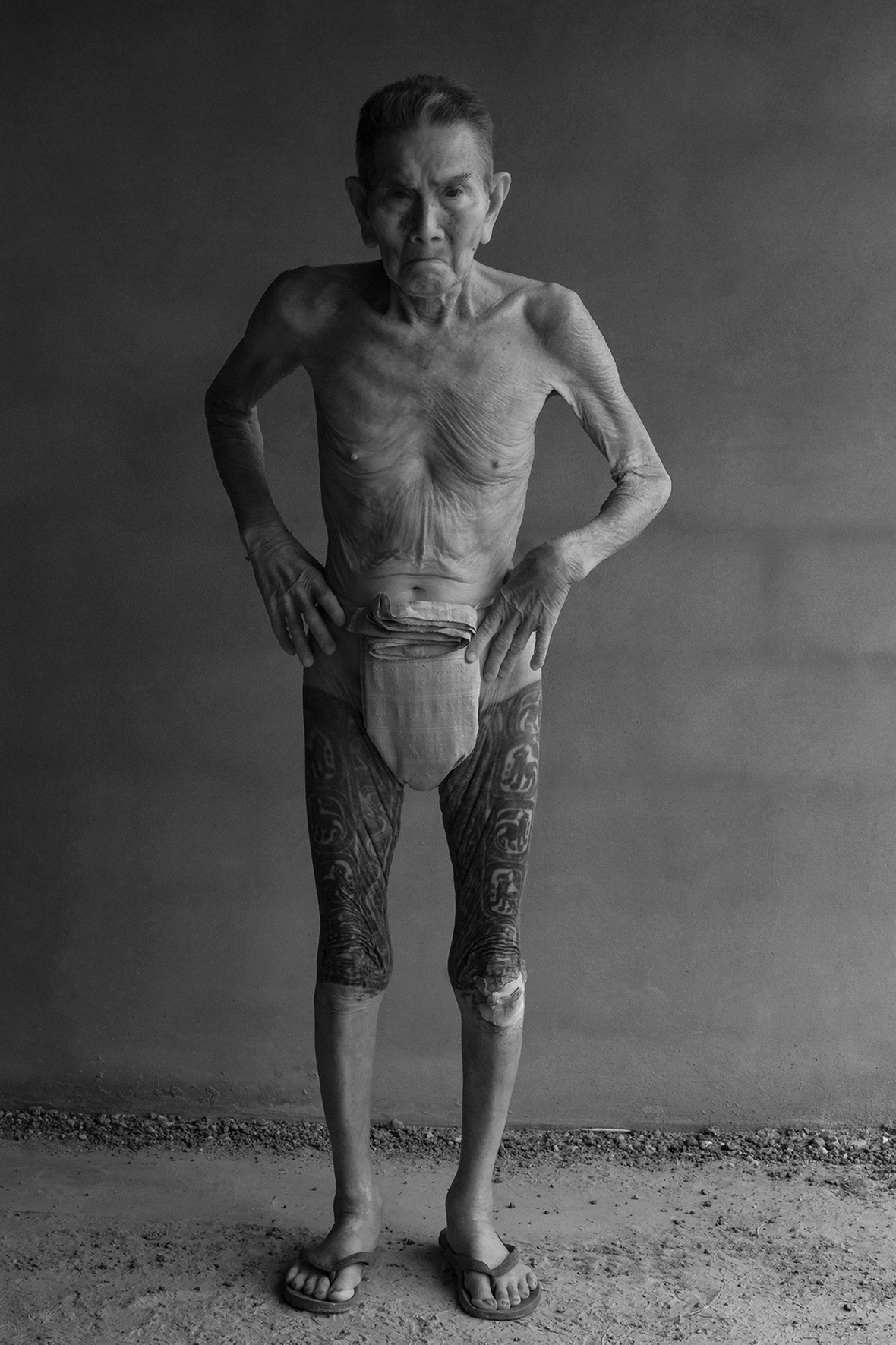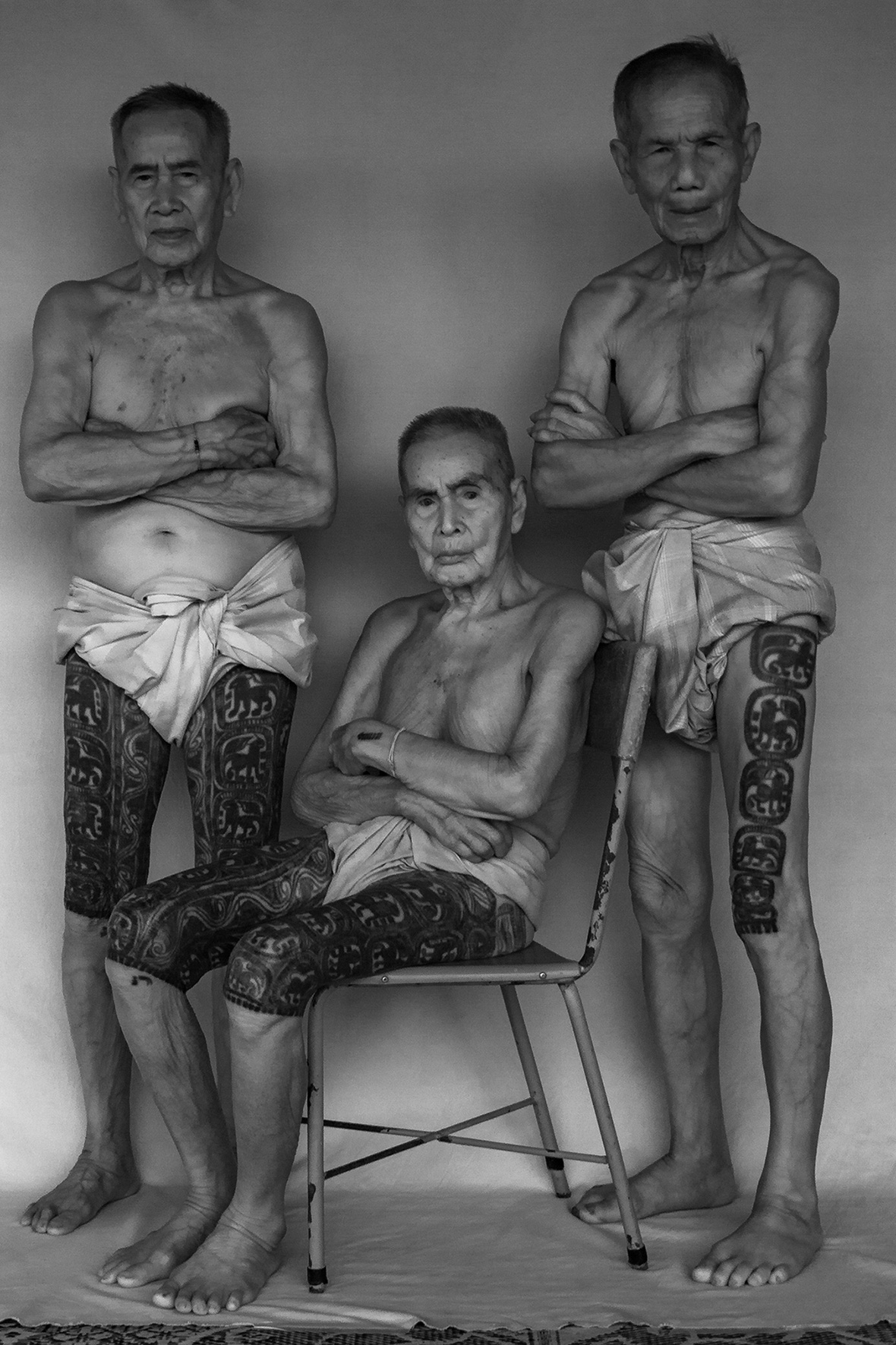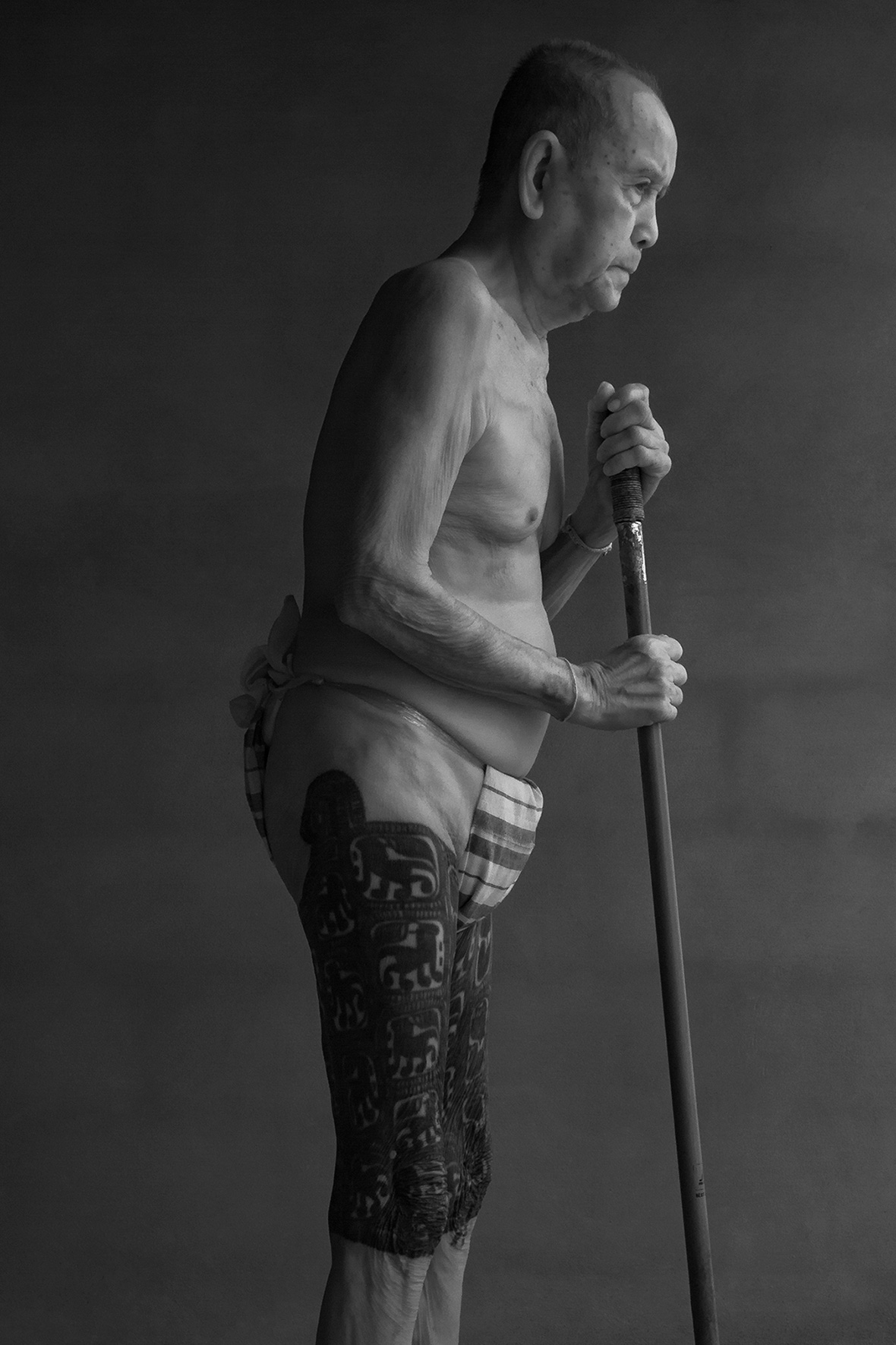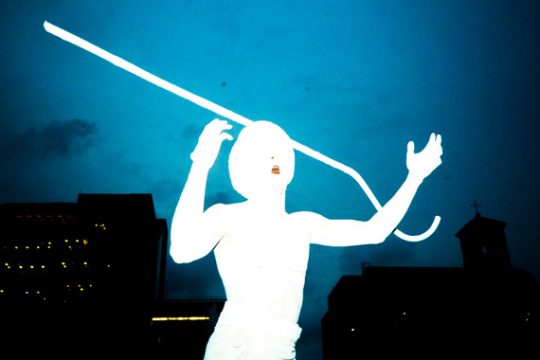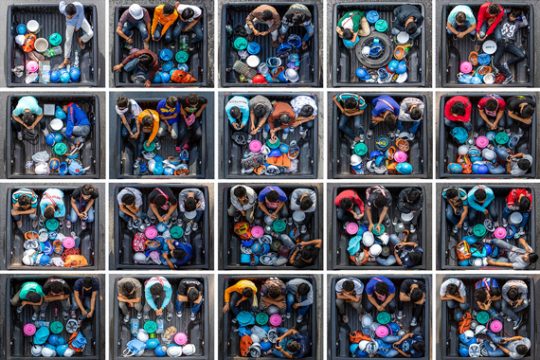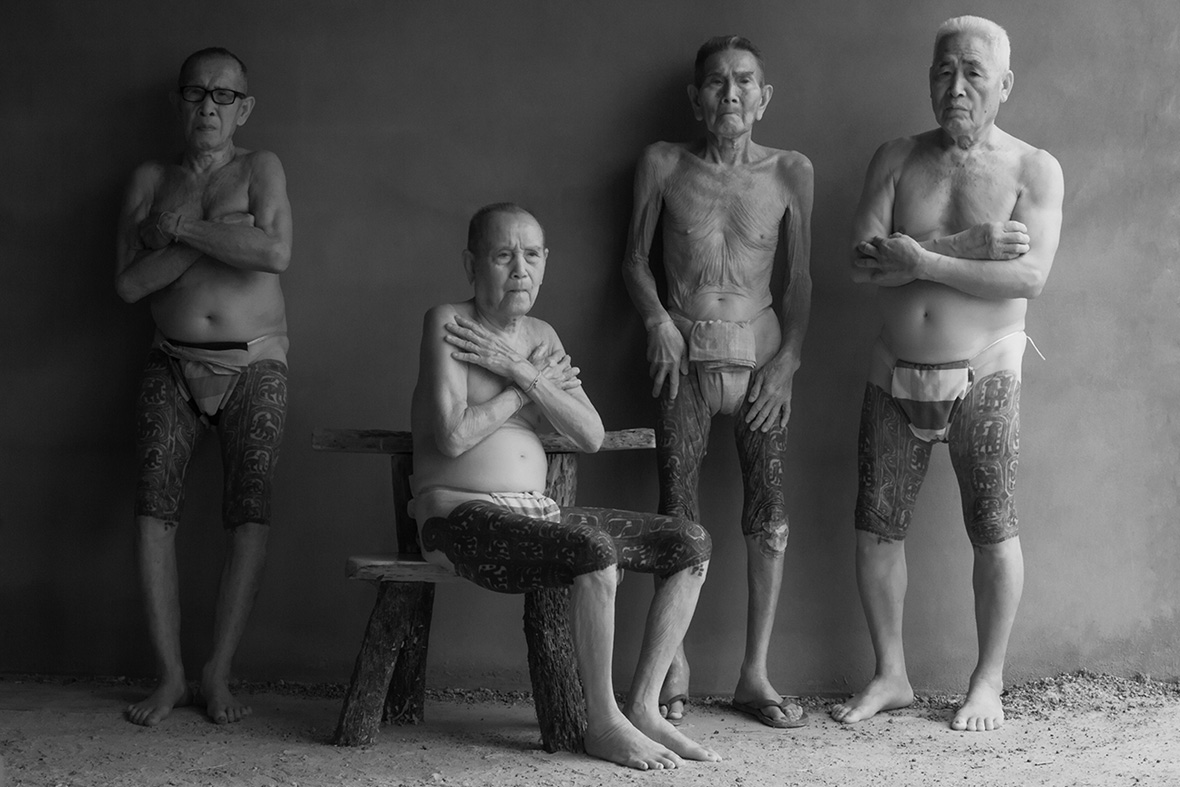
“Those with long-leg tattoos are ready to start a family.” — Siamese proverb.
Until the mid-twentieth century, it was common to see men in north and northeastern Thailand with their upper legs covered in dense tattoos. Today, however, the tradition has fallen by the wayside, and these tattoos remain only on an aging population of men between 80 and 110 years old.
To document the dying tradition, Thai artist and photographer Charnpichit Pongtongsumran spent five years searching and photographing the last of these tattooed men, a journey that’s culminated in The Spirit of Tattoo. In the first chapter of the three-part series, Sak E-san, Pongtongsumran focuses on the tattooed men living in northeast Thailand, a region also known as Isan. While he set off to document the fading art form, the series has also become a moving portrait of their pride and spirit.
“刺了大腿文身,即可成家立业尔。” —— 暹罗谚语。
在二十世纪中叶之前,在泰国北部和东北部,许多男子的大腿上都会刺满密密麻麻的文身。时至今日,这一传统已被人们所遗忘,现在,只有在一些 80 岁到 110 岁的男性身上还能看到这样的痕迹。
为了记录这种传统,泰国艺术家和摄影师 Charnpichit Pongtongsumran 花了五年的时间搜索并拍摄了这些刺着腿部文身的幸存者,最终组成《The Spirit of Tattoo》(《文身精神》)系列。该系列分为三部分,在第一部分“Sak E-san”,Charnpichit 着重拍摄了泰国东北部依伞(Isan)地区的文身男人。他在拍摄这些濒临消失的传统艺术时,也是在用影像重现他们的自豪感与内在精神。
Shot in natural light against plain backgrounds, Pongtongsumran’s black-and-white photographs have a certain timelessness. The men are posed still, wearing only loincloths held by strings around their waists, as was common in the past. They expose their tattoos in their entirety, an intricate patchwork of floral patterns and mythical creatures. The wrinkled skin and bent posture of these old men are juxtaposed against their tough demeanors; they look dignified and reassured, casting penetrating gazes at the camera.
“These men used to be farmers,” Pongtongsumran says. “Now, most of them are manual workers, making wicker baskets and other handicrafts. They usually move slowly, as older people do. But, as we prepared for the photos, they became energetic.”
Pongtongsumran was born in Isan but moved to Bangkok at an early age with his parents. He doesn’t recall his time in Isan, except for the strong bond he had his grandparents, who were also farmers. In a way, this project helps him to reconnect with his long-forgotten roots.
Charnpichit 的黑白照片都是以纯色背景,自然光拍摄,有一种经典的格调。照片里的男人只用布遮住下身,在腰间用绳子系住,这是他们以前常穿的一种服装。腿部的文身全部暴露出来,布满错落有致的花纹与神话角色图案。老人布满皱纹的皮肤、佝偻的身态与他们透露的坚韧个性形成对比。他们直直地望向镜头,看上去既骄傲而又自信。
“这些人以前都是农民,现在大多数人都变成了体力劳动者,制作柳条编织篮和其他手工艺品。”Charnpichit 说道,“因为上了年纪,工作时动作也比较慢。但是,每当我们准备拍照时,他们就立马变得精力充沛。”
出生于依伞地区的他,很小就与父母一起移居曼谷。他已经不太记得自己在依伞的生活,只记得他与同为农民的祖父母之间的亲密情感。从某种意义上说,这个项目让他得以重新与早已被他遗忘的根源联系起来。
The beginning of the project was discouraging. People told him that the tattoos were common in the past, but that they had disappeared. Often, when he caught wind of someone with these tattoos, he’d end up discovering that they had already passed away.
“Once, I heard about a man who had the tattoo, but when I went to see him, I found out that he had died a month before. Another time, I traveled to meet three men, but when I reached their village, one of them had already passed away, and I ended up attending his funeral,” he says.
刚开始着手进行这个项目时并不顺利。Charnpichit 得知这种文身在过去很普遍,但是现在已经销声匿迹。每次他打听到有这些文身的人时,最后往往会发现他们已经不在人世。
“有一次我打听到一个有腿部刺青的男人,但当我去拜访他时,他却在前一个月去世了。还有一次,我出发去见三个男人,但当我到达他们的村庄时,其中一位刚刚去世,我最后还参加了他的葬礼。”
The sense of urgency was heightened by the fact that these men often still live in remote villages. Sometimes help from the local governments was required to reach them. Once he finds a tattooed man, the process of shooting arranging travel can take up to two weeks, and it was rare to find more than two men with leg tattoos in a single village.
It also happened that, sometimes, family members didn’t know about their father or grandfather’s tattoos since it was always covered by clothing. It wasn’t out of shame though. “These men didn’t think of their tattoos as something special anymore,” Pongtongsumran explains. “They were proud to discover that they had a national treasure in their bodies.”
由于他们通常都生活在偏远的村庄中,这使得这个项目的拍摄变得更加紧迫,有时他还需要找当地政府帮忙才能找到这些男人。包括拍摄在内,整个过程通常要花两周的时间,而且很少能在一个村庄里找到两个以上有腿部文身的男人。
有时候,就连这些男人的家人也不知道原来自己的父亲或祖父有这样的刺青,因为它们总是被衣服遮住。这倒不是出于羞愧,正如 Charnpichit 所说:“这些男人以前已经不觉得自己的文身有什么特别,但现在反而会以此为荣,因为这代表着民族既往的传统瑰宝。”
In the past, having this kind of leg tattoo was a symbol of honor for the man in the region. Aside from being a mark of their ethnicity, it was also a rite of passage for boys around 15 years old, a voluntary act in which they could prove their manhood, bravery, and patience by enduring long hours of excruciating pain. They’d lie down on a thin mat while a tattoo master, using his feet, stretched their skin and hand-poke tattoos with large, steel needles. The pigment was a mixture of soot and bile from tigers, bears, and buffalos—which gave the ink its deep, enduring blacks.
Leg tattoos also had courting purposes. From that age on, boys had to attract the woman they would marry, and these tattoos were a way to do so. But out of all the men Pongtongsumran photographed, only one appears alongside his wife, hand in hand. In most cases, either one or another had already passed away. “It felt like a wedding photo,” he grins. “They were so proud of it; no one ever photographed them like that.”
早先时期,拥有这种腿部文身对当地的男人来说是一种荣誉的象征。这不仅代表着他们的种族,也是 15 岁男孩的成人仪式。通过这种自愿的行为,通过忍受长时间的痛苦,证明自己的男子气概、勇敢和耐心。文身时,他们会躺在一张薄垫上,而师傅则会用脚撑开他们的皮肤,用一根粗粗的钢针刺戳出图案。文身的颜料是用老虎、熊和水牛的深色胆汁混合而成的,可留下深色、持久的黑色刺青。
腿部文身也代表着许婚年龄到了。从 15 岁左右的年纪开始,男孩要开始吸引他们想娶的女人,而这就是追求女性的一种方式。但是在 Charnpichit 拍摄的所有照片中,只有一个男人与妻子手拉手一起出现。在大多数时候,夫妇中的其中一名已经去世了。他笑着说:“那感觉就像是一张结婚照。他们很喜欢这张照片,因为从来没有人给他们拍过那样的照片。”
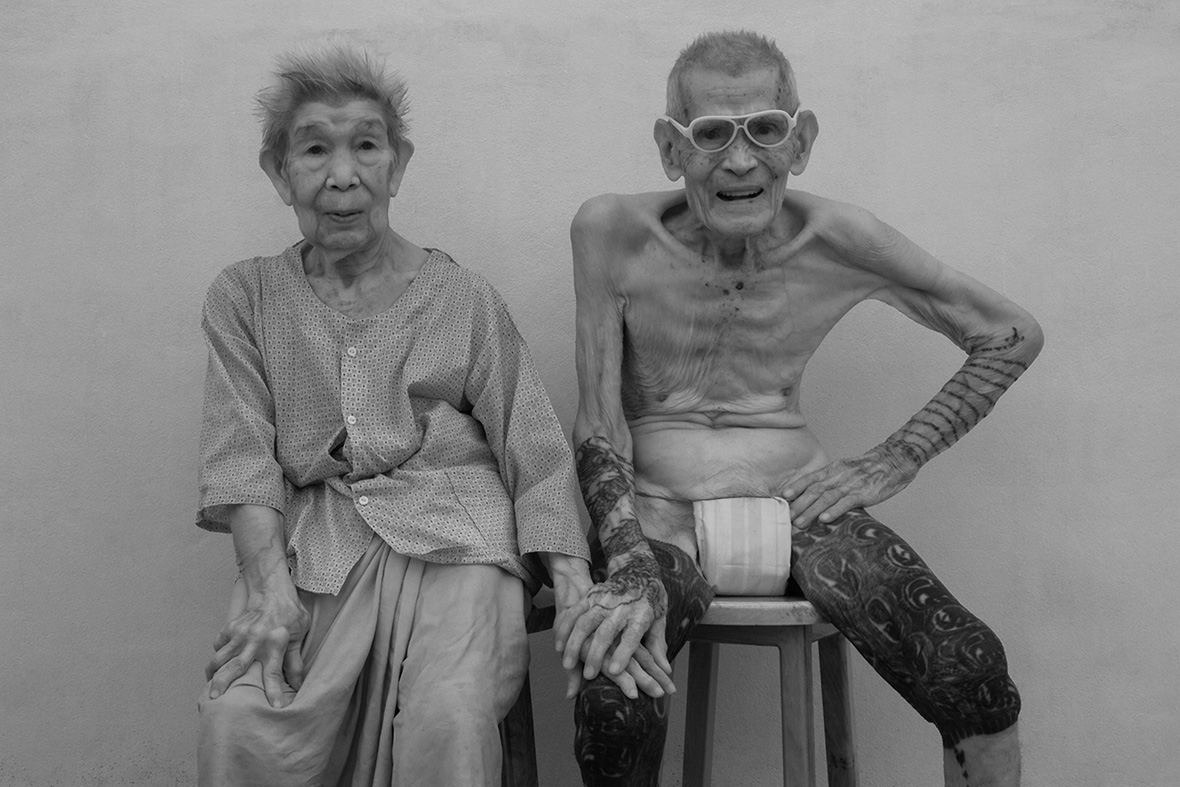
When asked about the fate of the tradition, Pongtongsumran admits that he isn’t optimistic. “It’s a delicate matter,” he says. “Young people may want to get similar tattoos. But the old masters are gone forever, and no one’s left to teach the new generations. The materials and methods have changed, and the meaning behind it has also changed. It’s not the same thing.”
当被问及如何看待这种文身传统的命运时,Charnpichit 承认自己并不乐观。他说:“这件事其实很无奈。也许有年轻人想要刺类似的文身,但是已经找不到拥有这种手艺的师傅了,也没有人可以教给下一代人了。文身的材料和工艺已经变了,其含义也随之改变了,再也不是同一回事。”
Like our stories? Follow us on Facebook and Instagram.
Instagram: @jb_charnpichit
Contributor: Tomas Pinheiro
Chinese Translation: Olivia Li




